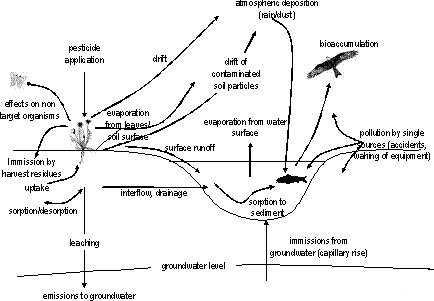Pesticides in Waters
 Pesticides pose a potential threat to human health and the environment. Many of the plant protection agents used today are highly toxic or are suspected to be carcinogenic or to act as hormonal active substances. Their damaging effect often extends to non target organisms. They pollute food and drinking water metabolise only slowly into nonhazardous constituents and can accumulate within the food chain to harmful concentrations. Pesticides thus contribute to the degradation of natural habitats and play a significant role in the decline of the number of species in agricultural landscapes.
Pesticides pose a potential threat to human health and the environment. Many of the plant protection agents used today are highly toxic or are suspected to be carcinogenic or to act as hormonal active substances. Their damaging effect often extends to non target organisms. They pollute food and drinking water metabolise only slowly into nonhazardous constituents and can accumulate within the food chain to harmful concentrations. Pesticides thus contribute to the degradation of natural habitats and play a significant role in the decline of the number of species in agricultural landscapes.
To assess different crop production practices regarding their potential to contribute to pesticide emissions indicators for the treatment intensity of three types of pesticides (herbicides, insecticides and fungicides) and growth regulators were introduced:
- treatment intensity indicator herbicides
- treatment intensity indicator insecticides
- treatment intensity indicator fungicides
- treatment intensity indicator growth regulators
All alternative production practices of all crops defined for the model were rated by their goal achievement levels using a fuzzy tool with the optimum being no pesticide treatment at all.
As in organic farming no synthetic pesticides are allowed, the crop production practices that are solely defined for organic farming are best rated among the established set of production methods. Set aside and low input grassland follows with only a slightly lower index of goal achievement. With up to four herbicide and one insecticide application sugar beets is by far the worst rated crop.

 Previous:
Nutrients in Surface Waters
Previous:
Nutrients in Surface Waters

